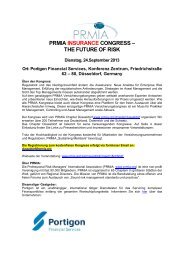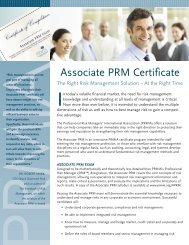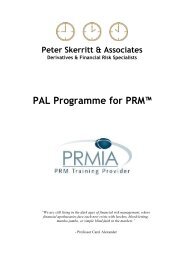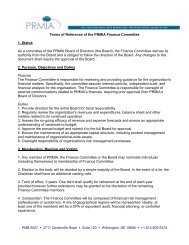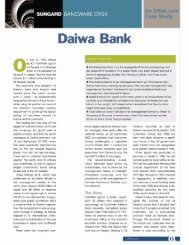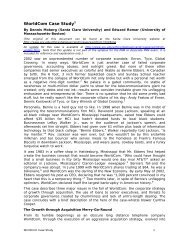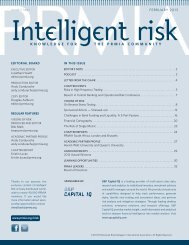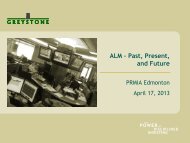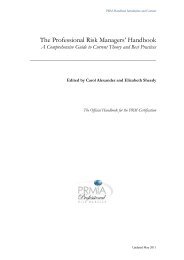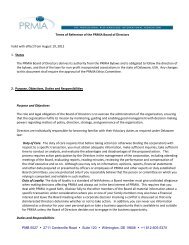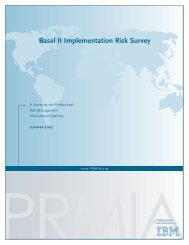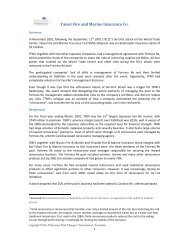Principles of good governance September 2009 - PRMIA
Principles of good governance September 2009 - PRMIA
Principles of good governance September 2009 - PRMIA
Create successful ePaper yourself
Turn your PDF publications into a flip-book with our unique Google optimized e-Paper software.
The Risk Management Infrastructure must:<br />
Requirement<br />
• be independently staffed and report to an employee who is on the Executive Committee (Operating<br />
Committee), but who is not a business unit leader<br />
• possess sufficient funding, intellectual and technological capacity to understand and communicate<br />
the risks presented by the business structure and environment<br />
<strong>Principles</strong><br />
<strong>PRMIA</strong> <strong>Principles</strong> <strong>of</strong> Good Governance Page 6<br />
Key Competencies<br />
Resources and<br />
Processes<br />
Ongoing Education<br />
and Discernment<br />
Compensation<br />
Architecture<br />
Independence <strong>of</strong><br />
Key parties<br />
Risk appetite<br />
External Validation<br />
Clear<br />
Accountability<br />
Disclosure and<br />
Transparency<br />
Trust, honesty and<br />
fairness <strong>of</strong> key<br />
people<br />
<br />
<br />
• avoid silos <strong>of</strong> control and oversight <br />
• include financial risk management, compliance and external reporting and, to the extent that<br />
resources allow, should exclude legal or accounting<br />
• define the organisation’s definition <strong>of</strong> risk management as articulated by the Board in clear and<br />
unmistakable terms<br />
• implement and maintain an approval and implementation process which ensures that the<br />
organisation’s compensation and targets policy does not compromise the risk management<br />
framework and risk appetite policies<br />
• have a budget that is established by a subset <strong>of</strong> the Executive Committee or Board, excluding the<br />
influence <strong>of</strong> individual business-unit leaders<br />
• provide a clear Escalation Policy, for the employees <strong>of</strong> the organisation as a Whole, to escalate<br />
matters <strong>of</strong> concern without the threat <strong>of</strong> inappropriately adverse impact<br />
• actively provide ongoing pr<strong>of</strong>essional development for risk management staff and require them to<br />
be committed to standards <strong>of</strong> best practice, conduct and ethics in their work<br />
• provide general risk management and related corporate <strong>governance</strong> training for employees <strong>of</strong> the<br />
organisation as a Whole – responsibility for the implementation <strong>of</strong> a risk culture rests with the risk<br />
management infrastructure<br />
• provide, in the organisation's Annual Report to Shareholders, a detailed description <strong>of</strong> the Risk<br />
Management Infrastructure



